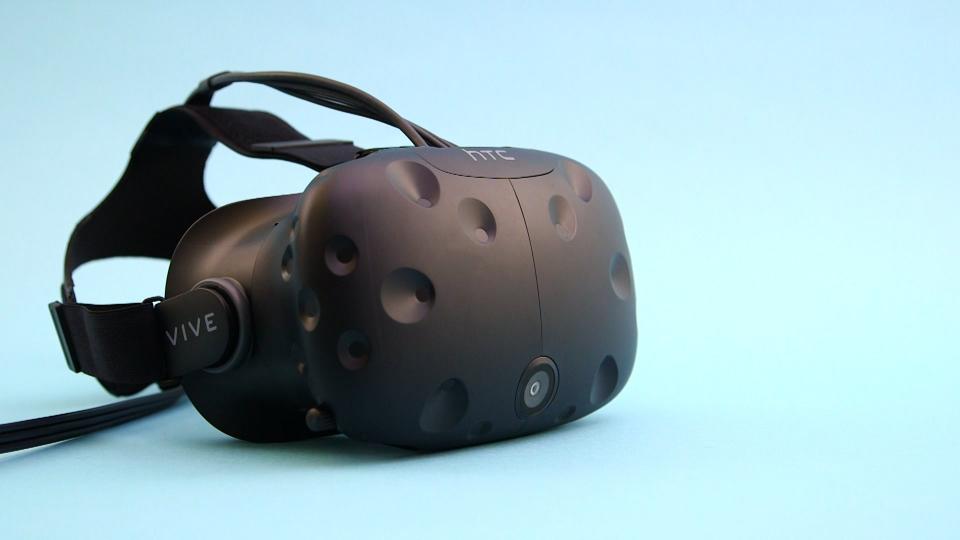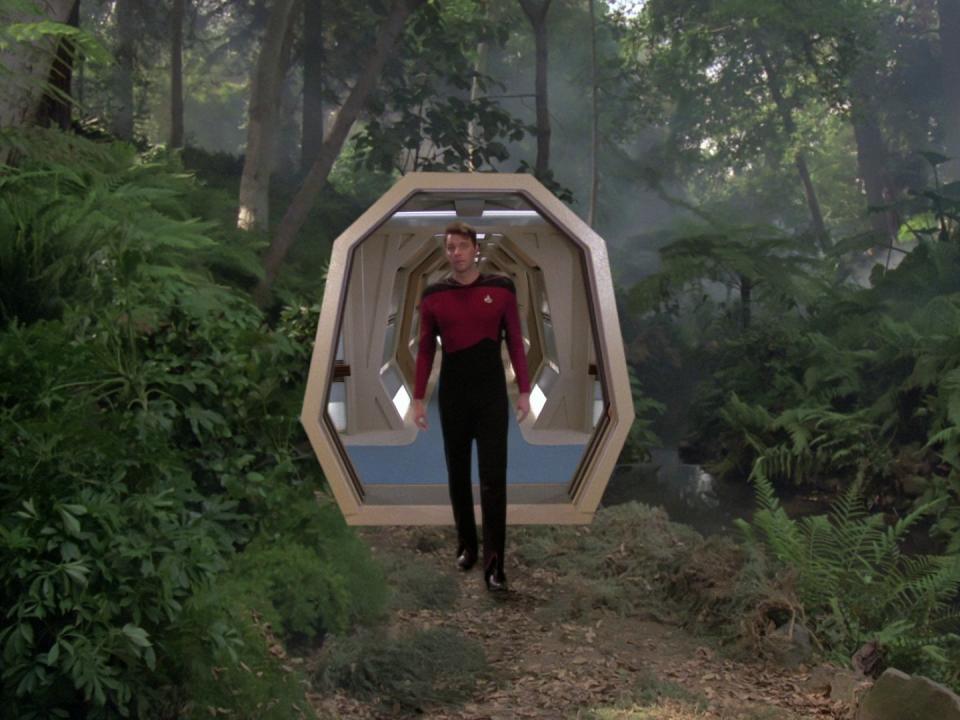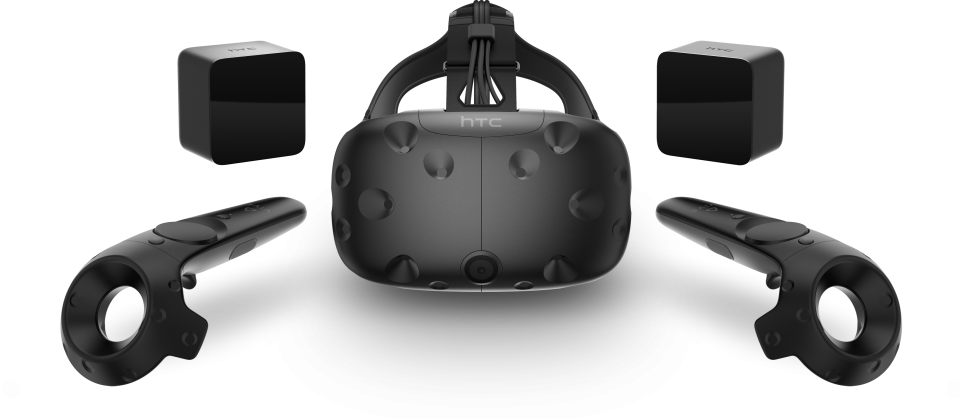I just tried virtual reality for the first time — it still has a long way to go
The promise of virtual reality technology has always been that users will be able to enter immersive worlds, tricked — at least for a short amount of time — into thinking they're aboard a space ship, or in a vast jungle, or whatever else.
Having spent the past half hour or so with the HTC Vive, I'm not convinced we've reached that point yet. It was neat, sure, but virtual reality still has a long way to go before it lives up to the fantasy we've been sold on.

Corey Protin
Let's start with the good stuff: from the second I put on the headset, my eyes were immediately fooled into thinking I was occupying some other space. I expected to be disoriented when I turned my head from left to right, assuming there would be a slight delay from when I turned my head to when the display changed with it. Not so.
If I looked to the left, it was as if I was doing it in real life, able to see different areas of the space in a totally intuitive and natural way. Despite a slight "screen door" effect — being able to see individual pixels on the screen inside the VR headset — everything about the visual component of my time with the Vive was spot on.
Everything else about the experience belied the smoothness of what I was experiencing visually — from the cord that trailed down my back and got caught on my shoes, to the panicked shouts of those around me who were trying to keep me from ripping the computer off the desk with my movement — all of my senses were constantly reminding me that I was just a silly man with a goofy device strapped to his face.

Corey Protin
And once I actually got into a game — in this case, it was "The Lab," a sort of tech demo with several distinct mini-games — I found that moving around presented some problems. Since the room I was actually in was much smaller than the simulated space (as will be the case for everyone), the way you move around is by selecting an area of the floor in front of you, causing you to "teleport" to another area of the room. I'm not the type to easily get motion sickness, but even for me this was an incredibly odd, jarring sensation.
Also, it turns out that having two screens directly in front of your eyeballs for an extended amount of time can very quickly yield headaches and other kinds of visual confusion. Just a few minutes into my time playing "The Lab," I could feel an aching behind my eyes. When I removed the headset for some relief, the sensation of having my eyes readjust to the room around me was incredibly disorienting.

Corey ProtinThis is to be expected with any sort of visual trickery or with prolonged exposure to any screen, but the time it took for this feeling to kick in with the HTC Vive was much quicker than I had ever experienced.
I'm lucky enough to work at a place with access to this kind of cutting-edge technology, but in order for the average consumer to get this tech in their homes, it's going to cost $800. That includes the headset, two motion controllers, and two small black boxes that track your movement through the room. In order to actually use it, however, you'll have to fork over an additional $700-$1000 for a high-powered gaming PC. It probably goes without saying, but that's far out of reach for the average consumer. Right now, this tech is only for the wealthiest and most dedicated of gaming enthusiasts.

Corey Protin
While I was truly amazed at the visual smoothness and seamlessness of my experience with the HTC Vive, I couldn't help but constantly be reminded of its shortcomings — the awkwardness of moving around the room without destroying something, the eye strain — all of which served to break the immersion that's key to making virtual reality an essential part of the gaming landscape. That's before taking the incredibly high cost of entry into consideration.
And that's fine, for now. But don't be fooled — virtual reality technology still has a long way to go before it can fulfill the sci-fi promise of getting lost in other worlds.
NOW WATCH: This virtual reality system is so much better than the Oculus — but is it worth it?

 Yahoo News
Yahoo News 

